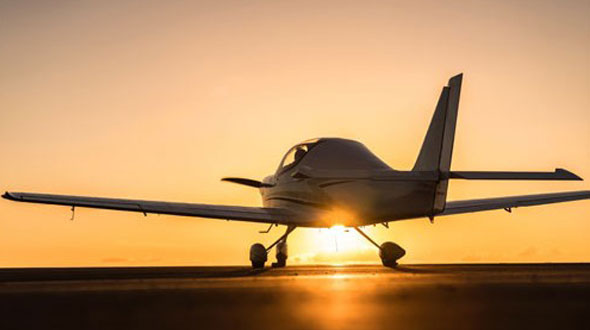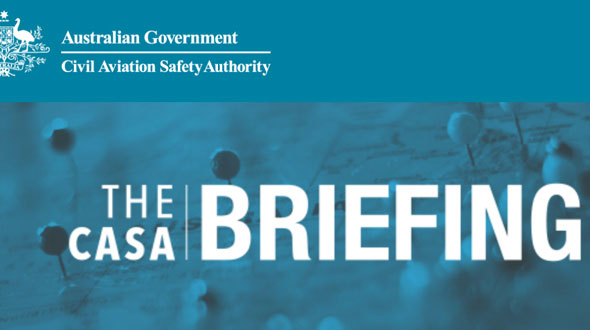Article supplied by CASA.
We’ve all come to expect the unexpected from COVID-19 and the start to 2022 has been no exception.
Once more our resilience is being tested but as indications emerge that the latest wave of Omicron infections may be peaking, at CASA we are focusing on our plans to work with industry on a safe recovery.
It was so good to see so many of you engaging with our flexible approach to transitioning to the flight operations regulations when we hit our critical 2 December milestone.
We also invited you to get ahead of the international curve with our new digital licences and to try out our refreshed website.
The website has improved search and navigation functionality from both mobile devices and desktops, and we have listened to your feedback.
We remain committed to helping you recover from the ravages of the coronavirus epidemic with plans to remove regulatory bottlenecks and assist the general aviation sector to operate efficiently and safely.
This aligns with commitments made by the federal government in its Aviation Recovery Framework which, according to the reports I have read, has been generally well-received by industry
Engineers’ scholarships now open
We’re offering three annual $5000 scholarships to help up-and-coming engineers achieve their Part 66 licence.
The scholarships will be open to people who have worked for a minimum of 2 years in aviation and have started structured training towards a maintenance licence, or who are doing on-the-job training.
Fit to work after COVID-19?
Pilots, air traffic controllers and other members of the aviation community can find new guidance on our website to help them determine their fitness to return to work after a bout of COVID-19
A self-assessment checklist steps them through a series of questions about their COVID-19 experience and recovery.
Pilots, air traffic controllers and other members of the aviation community can find new guidance on our website to help them determine their fitness to return to work after a bout of COVID-19
A self-assessment checklist steps them through a series of questions about their COVID-19 experience and recovery.
AWB highlights R22/244 governor control issues
An Airworthiness Bulletin (AWB) has been released about governor control anomalies in Robinson R22 and R44 helicopters.
The bulletin applies to aircraft with an Engine Monitoring Unit (EMU) and is in response to several cases of the governor failing to control revolutions per minute under normal conditions.
CASA Wings Awards
We’re proud to sponsor the Australian Flying magazine’s CASA Wings Awards, which recognise the efforts of the many people who have dedicated their lives to general aviation through individual effort or as part of an aero club or flying school.
We wish to congratulate WardAir and Bathurst Aero Club – both based in the NSW Central Tablelands town – which were recognised as Flying training organisation of the year and Aero Club of the Year respectively.
Navigating New Rules
Can’t locate that Civil Aviation Advisory Publication (CAAP) you always refer to? Don’t know where to find the form to apply for something? It may no longer exist.
When the new flight operations rules began on 2 December, the guidance material and forms also needed to change.
Get your pilot guides to understand our rules
Our guides to help pilots and operators understand the rules of the air are now updated and refreshed.
A fully reviewed and revised Visual Flight Rules Guide (VFRG) and an updated Part 91 Plain English Guide (Part 91 PEG) are now available to download.
Drama in the skies: listen to our Close Calls podcast
What caused a worrying change in engine sound over the highlands of Papua New Guinea? How did the crew of a Citation II corporate jet react to a catastrophic engine failure?
The answers to these questions and more lie in our gripping Close Calls podcast series.
Check out our new website
Our new look website is now up and running. The new site is mobile friendly on all devices and designed to make it easier for you to find the information you’re looking for, know and follow the rules, apply for a licence, permission or authorisation, and use our online services.
We’ve worked closely with people across our aviation community throughout all stages of development.
Have your say on proposed drone regs amendments
The drone industry is rapidly expanding. To keep pace with growth and demand in the sector, laws governing drones must be regularly reviewed to provide effective and efficient safety regulations for all airspace users and the community.
We are consulting on proposed amendments to drone rules that will benefit industry and operators.
Advanced air mobility set to take off
Advanced air mobility is a step closer to reality after we signed a memorandum of understanding in December, in collaboration with the Department of Infrastructure, Transport, Regional Development and Communications, Airservices Australia, and the state of Victoria.
Advanced air mobility refers to emerging aviation technologies, such as electric vertical take-off and landing vehicles, to move people and cargo.
Find out how we will support growth and innovation in the advanced air mobility sector.






